I can’t get enough of autumn olives. I wrote about them, honoring them, around this time last year and shared my autumn olive jelly recipe. In my area, the sacred time of the equinox is the sacred time to go out and gather–it is just when they start getting really tasty and ready to harvest in large quantity! This year, I introduced a number of new friends to them, and we gorged ourselves eating handfuls of them for hours. I wanted to share, today, my favorite recipe for these delightful treats–a fruit leather recipe!

So, let’s just start by saying that Autumn Olive is awesome, and it is certainly one of our first responder plants–fixing nitrogen in the soil, bringing health and fertility back to the land, providing nectar and habitat, and perhaps most awesomely, producing bountiful tasty berries that are high in lycopene and delicious. I know some people crab about it, but that’s not the subject of this post–instead, we are here to celebrate Autumn Olive’s awesomeness with another recipe.
A few words of advice on harvesting–different bushes ripen at slightly different times, and may have smaller or larger fruits. They also have slightly different flavors–taste your way around bushes, if you have options, and find the ones that have abundance and excellent flavor. Usually, the harvest window on these is a few weeks, up to a month, if you have access to a lot of bushes. I have more details on harvesting and finding them in my earlier post.
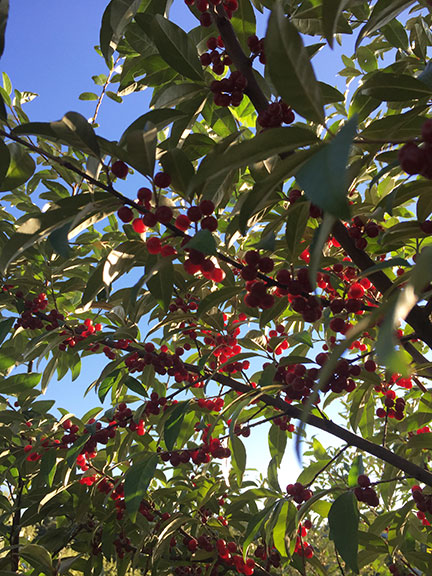
Autumn Olive Fruit Leather
For this fruit leather recipe, you want to get at least 8 or so cups of autumn olives (not hard most years). Look for trees that have extra juicy and abundant berries–if you look around, you will likely find enough. The nice thing is that this recipe has one ingredient (or two, if you want to add some honey) so you don’t really need to measure anything.
Ingredients:
- Autumn Olives (fresh and rinsed)
- A small amount of water
- Honey (if desired; makes sweeter)
Note that this fruit leather recipe works for any fruit–you may have different ways of processing your fruit (removing seeds, pits, etc) but essentially you need cooked (or pureed raw) fruit and optional sweetener. It really is that easy!
Making Your Fruit Leather: Step by Step
Preparing the autumn olives. You are going to start out by “garbling” your autumn olives. This means you want to make sure there aren’t little spiders, or bugs, or something that isn’t autumn olive in with your mix. Also pull out any leaves, etc, that might have gotten harvested. As part of the garbling, I like to give them a rinse and save any little bugs who accidentally got harvested.
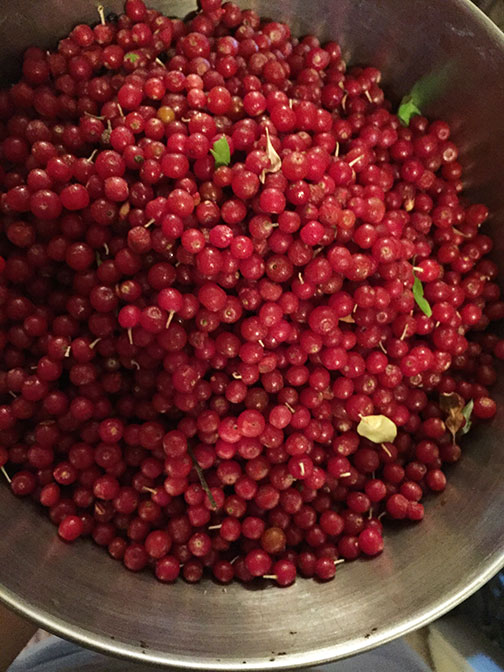
Now, add your autumn olives to a pot and start mashing. You will likely need to add a bit of water (I added about 1/2 a cup for my 8 or so cups of autumn olives) to get a good mash and make sure they don’t burn. As they cook, they mash easily. Here’s a photo after about 5 min of cooking.

As you cook and mash, stir frequently to prevent burning. You’ll see that as they cook, they turn really opaque and creamy. Eventually, you’ll end up with some autumn olive puree, that will look like this.
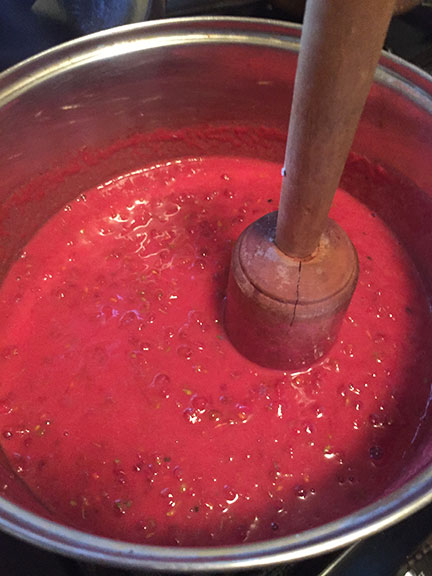
It doesn’t matter if they are 100% mashed–what I have above is fine for the food mill that I own.
At this point, you will want to let it cool a bit and then remove the seeds. The best way to remove the seeds is with a small food mill. You can find these readily at thrift stores, garage sales, and the like. Here’s mine in action.

The nice thing about cooking is that it kills the seeds, so you don’t have to worry about thousands of autumn olives coming up in your compost pile. After you have processed all the autumn olive (which takes maybe 5-10 min) you can then add any sweetening agents you’d like. I find that honey and autumn olive go perfectly together. In this case, I had some amazing early season honey that was actually made from autumn olives and I added this. Talk about full circle! Wow!
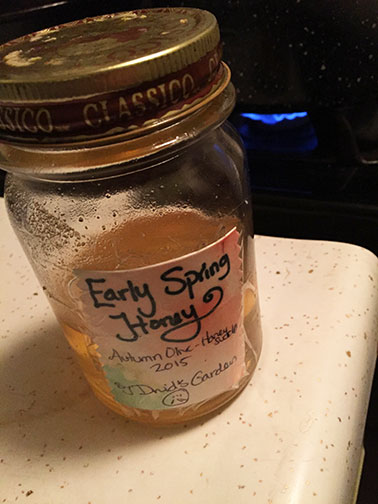
I added honey to taste–for my batch, about 4 tablespoons took the edge off the tartness and added delightful sweetness. To incorporate the honey, the mixture should still be warm (or you can warm it up again on the stove, but stir frequently!)
Transfer the mixture to some dehydrator trays. Sometimes it can stick, which you can address by slightly greasing the trays (although it will come off). Wax paper doesn’t’ work nearly as well, and if it dries out too much, can get really stuck on there permanently.
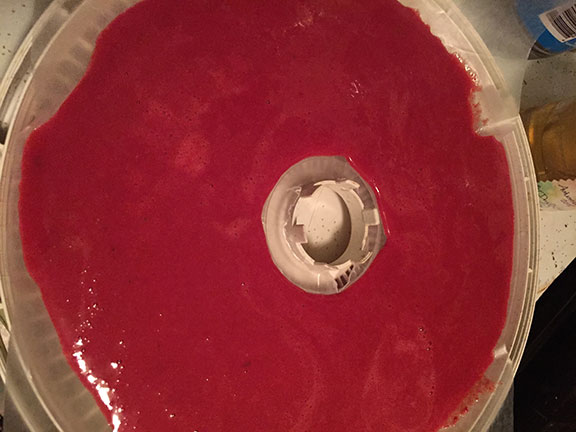
Then, you dehydrate till the water is gone–typically, somewhere around 24 hours depending on your dehydrator. You could also do this in the oven on the lowest setting with the oven door slightly cracked.
Autumn olive fruit leather is super flavorful and amazing. I like to take little bits of it out on the trail with me and eat it with nuts, etc. It stores well for over a year in a simple mason jar (cool, dark place). I hope you enjoy this recipe–and happy foraging!




Reblogged this on Rattiesforeverworldpresscom.
Thanks for the reblog!
Hi I nominated you for versatile blogger award, check out my site for more!
LOL, thanks for the nomination! I do write on a lot of topics, but all are related to the practice of inner and outer druidry :).
Yes, and there is so much to that! You cover a lot of ground ( literally and figuratively)
I think the autumn olive is the bush in the driveway. She suggests we can eat the berries.
Sent from my Verizon 4G LTE smartphone
What to use in dehydrator to cover holes? You said a wax paper doesn’t work.
I usually use parchment. The issue with Wax Paper is that sometimes the wax can get stuck to the Autumn olive. I’ve never had any issues with parchment.